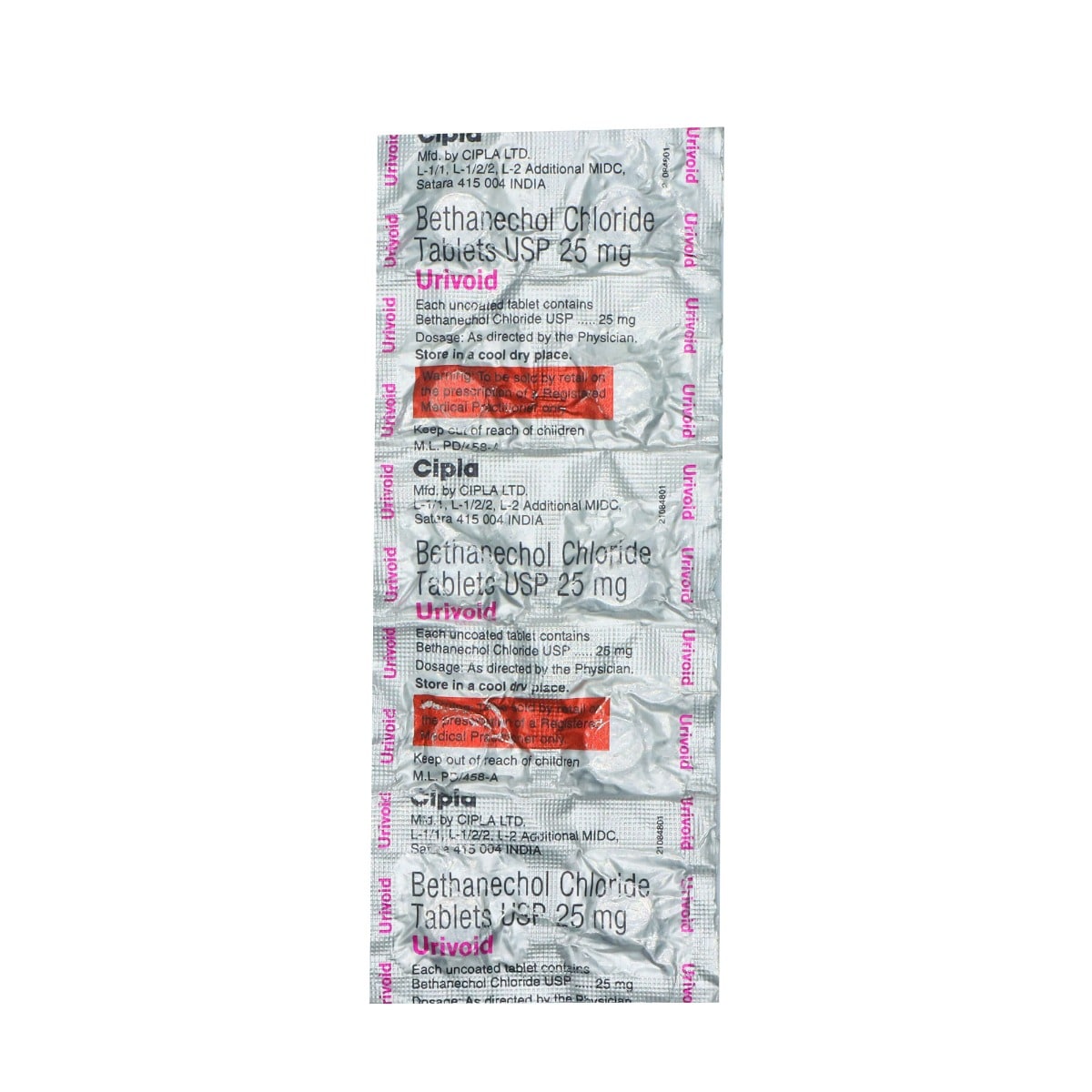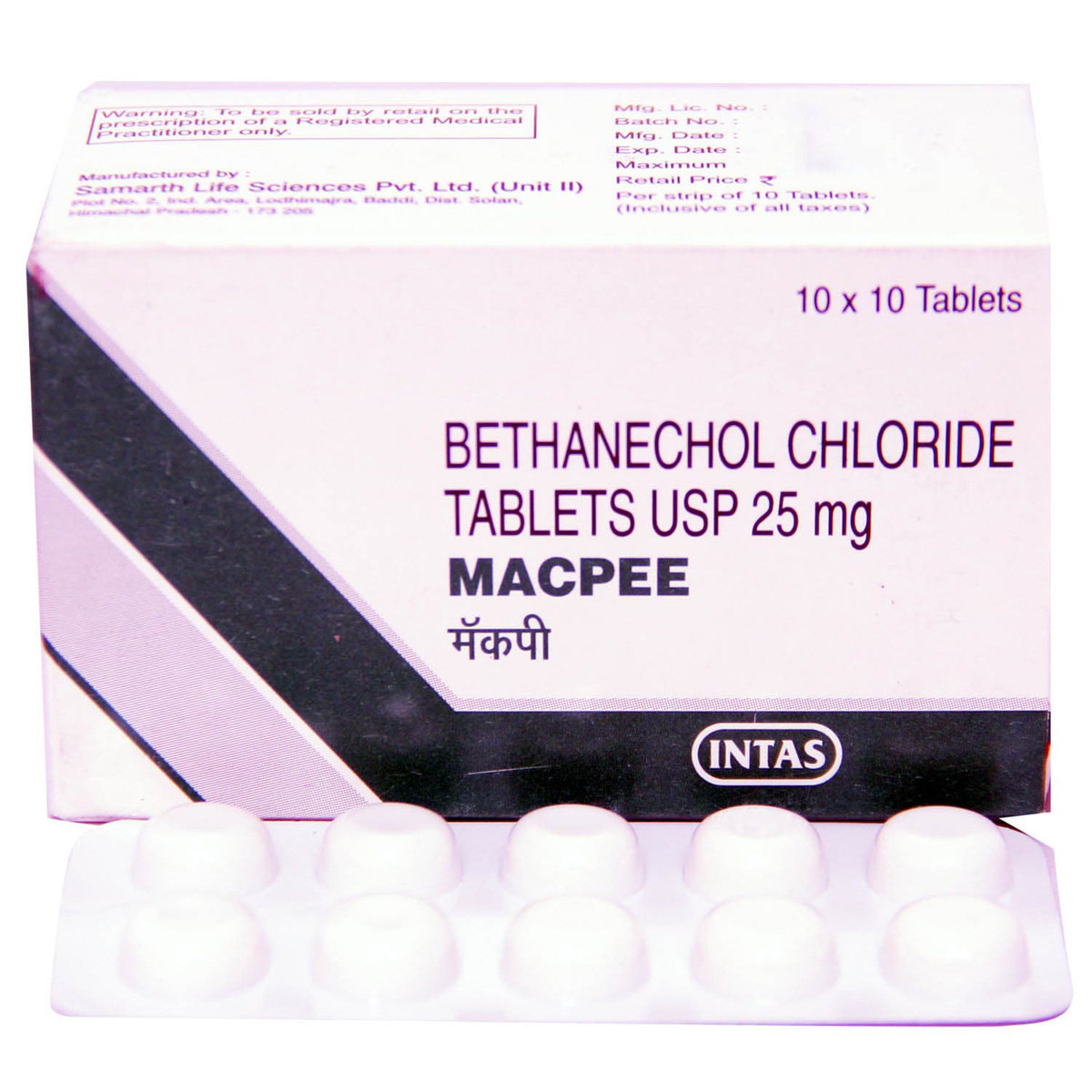Bethseas 25 Tablet

MRP ₹193
(Inclusive of all Taxes)
₹28.9 Cashback (15%)
know your delivery time
Provide Delivery Location
Composition :
Manufacturer/Marketer :
Consume Type :
Expires on or after :
Return Policy :

Secure Payment

Trusted by 8 Crore Indians

Genuine Products
Therapeutic Class
Country of origin
Manufacturer/Marketer address
Disclaimer
Alcohol
Safe if prescribed
Alcohol may increase the risk of side-effects. So, do not take alcohol while using Bethseas 25 Tablet .
Pregnancy
Consult your doctor
Bethseas 25 Tablet is a category C medicine. It should be used in pregnant women only if needed.
Breast Feeding
Consult your doctor
Bethseas 25 Tablet should be used in breastfeeding mothers only if needed.
Driving
Safe if prescribed
Bethseas 25 Tablet may cause dizziness. So, do not drive or operate heavy machinery while using Bethseas 25 Tablet .
Liver
Consult your doctor
Bethseas 25 Tablet should be used with caution in patients with liver diseases.
Kidney
Consult your doctor
Bethseas 25 Tablet should be used with caution in patients with kidney diseases. Dose adjustments may be necessary.
Children
Safe if prescribed
Bethseas 25 Tablet should not be given to children below 12 years of age unless prescribed by a doctor.
Product Substitutes
About Bethseas 25 Tablet
Bethseas 25 Tablet belongs to the class of medications called ‘Cholinergic agents’ used to treat urinary retention (holding urine in the bladder) due to surgery, childbirth, or bladder muscle problems.
Bethseas 25 Tablet contains ‘bethanechol’ that helps treat the inability to urinate by acting on the bladder muscles. It contracts the detrusor muscle (a bladder muscle) pushing the urine out of the bladder, thus starting the urination process and emptying it.
Take Bethseas 25 Tablet as prescribed. Your doctor will advise you on how often you take Bethseas 25 Tablet based on your medical condition. You may experience some side effects such as abdominal discomfort, nausea, diarrhea, urgent desire to urinate, excessive salivation, flushing (reddening of the skin), and sweating. Consult a doctor if these side effects do not go away or worsen.
Do not take Bethseas 25 Tablet if you are allergic to ‘bethanechol’ or any other contents. Before taking Bethseas 25 Tablet , inform your doctor if you have undergone surgery, or previously been diagnosed with gastrointestinal (stomach and intestine) problems, urinary blockages, asthma, heart diseases, hyperthyroidism, seizures, Parkinson’s disease, or blood pressure problems (low or high). Also, tell your doctor if you are pregnant or breastfeeding. If Bethseas 25 Tablet is prescribed, do not take alcohol while using Bethseas 25 Tablet , as the condition may worsen due to increased risk of side effects. It would be best if you refrained from activities that require you to stay alert such as driving or operating heavy machinery as Bethseas 25 Tablet may cause dizziness.
Uses of Bethseas 25 Tablet
Medicinal Benefits Mweb
Key Benefits
Bethseas 25 Tablet is a cholinergic agent used to treat urinary retention. It works by acting on the detrusor muscle (bladder muscle) to push the urine out of the bladder. The detrusor muscle contracts strong enough to start the micturition (the process of urination), thus emptying the bladder.
Directions for Use
Side Effects of Bethseas 25 Tablet
- Abdominal discomfort
- Nausea
- Diarrhoea
- Urgent desire to urinate
- Excessive salivation
- Flushing (reddening of the skin)
- Sweating
Drug Warnings
Do not take Bethseas 25 Tablet if you are allergic to any contents of it. Before taking Bethseas 25 Tablet , inform your doctor if you had recent surgeries, stomach or intestinal ulcers, bladder obstruction, peritonitis (infection of the stomach lining), or inflammatory bowel disease (inflammation of the digestive tract). Use of Bethseas 25 Tablet in the above illnesses may worsen the condition. Bethseas 25 Tablet may cause atrial fibrillation (heart rhythm problems) in patients with hyperthyroidism (overactive thyroid). Bethseas 25 Tablet may flare up the symptoms when used in patients with lung diseases such as asthma or chronic obstructive pulmonary disorder (COPD) as it can constrict the airways. Do not use Bethseas 25 Tablet in patients with heart diseases, hypotension (low blood pressure), bradycardia (low heart rate), seizures, and Parkinson’s disease. Do not consume alcohol as it can increase dizziness. Inform your doctor if you are pregnant or breastfeeding. To avoid dizziness from this medicine, stand up slowly from a sitting or lying position.
Drug-Drug Interactions
Drug-Drug Interactions
Login/Sign Up
Taking Iohexol with Bethseas 25 Tablet may increase the risk of seizures(fits).
How to manage the interaction:
Taking Bethseas 25 Tablet with Iohexol can result in an interaction, but it can be taken if a doctor has advised it. However, if you notice symptoms like fits, consult a doctor immediately. Do not discontinue any medications without consulting a doctor.
Taking Iomeprol with Bethseas 25 Tablet may increase the risk of seizures(fits).
How to manage the interaction:
Using Bethseas 25 Tablet with Iomeprol can result in an interaction, but it can be taken if a doctor has advised it. However, if you notice symptoms like seizures, consult a doctor immediately. Do not discontinue any medications without consulting a doctor.
Taking Iopamidol with Bethseas 25 Tablet may increase the risk of seizures(fits).
How to manage the interaction:
Using Bethseas 25 Tablet with Iopamidol can result in an interaction, but it can be taken if a doctor has advised it. However, if you notice symptoms like seizures, consult a doctor immediately. Do not discontinue any medications without consulting a doctor.
Tramadol may cause seizures (fits), and taking it with Bethseas 25 Tablet may increase that risk.
How to manage the interaction:
Using Bethseas 25 Tablet with Tramadol together can result in an interaction, it can be taken if a doctor has advised it. Avoid performing tasks requiring mental focus, such as operating dangerous machinery or driving. Do not discontinue any medications without a doctor's advice.
Metrizamide may cause seizures (fits), and taking it with Bethseas 25 Tablet may increase that risk.
How to manage the interaction:
Using Bethseas 25 Tablet with Metrizamide can result in an interaction, but it can be taken if a doctor has advised it. However, if you notice symptoms like seizures(fits), consult a doctor immediately. Do not discontinue any medications without consulting a doctor.
Bupropion may rarely cause seizures and using it with Bethseas 25 Tablet may increase that risk.
How to manage the interaction:
Although there is an interaction, bethanecol can be taken with bupropion if prescribed by the doctor. Avoid performing tasks requiring mental focus, such as operating dangerous machinery or driving. Do not discontinue any medications without a doctor's advice.
Drug-Food Interactions
Drug-Food Interactions
Login/Sign Up
Drug-Diseases Interactions
Drug-Diseases Interactions
Login/Sign Up
Patients with reactive airway disease that is uncontrolled should not use cholinergic agonists. Acetylcholine hydrolysis is inhibited by cholinergic agonists. Acetylcholine's heightened action causes bronchospasm, increased bronchial secretions, and bronchial constriction.
How to manage the interaction:
This medicine is contraindicated in patients with uncontrolled reactive airway disease as it may cause constriction of the bronchi, increased bronchial secretions, and bronchospasm.
In individuals with prominent bradycardia, hypotension, coronary artery disease, or conduction problems, the use of cholinergic agonists such as Bethseas 25 Tablet and pilocarpine is contraindicated.
How to manage the interaction:
Bethseas 25 Tablet is contraindicated in patients with bradycardia (slow heart rate), low/high blood pressure, coronary artery disease or conduction disorders.
Patients with peptic ulcers, mechanical GI obstruction, acute GI inflammatory diseases, or urinary obstruction should not use cholinergic agonists. Gastric contractions, GI motility, and acid secretion may all increase as a result of cholinergic activity. Urine reflux may happen in people who have urine retention if the sphincter does not open up after cholinergic stimulation contracts the bladder. If there is bacteriuria, the urine from the bladder might reflux and infect the kidneys and upper urinary tract.
How to manage the interaction:
It is contraindicated in patients with peptic ulcers, mechanical gastrointestinal obstruction, acute gastrointestinal inflammatory conditions, or urinary obstruction.
Cholinergic medications may not be recommended for patients with hyperthyroidism. Patients who received a cholinergic agonist for hyperthyroidism experienced atrial fibrillation.
How to manage the interaction:
It is contraindicated in patients with hyperthyroidism (overactive thyroid) as irregular, rapid heart rate has occurred in hyperthyroid patients administered with cholinergic agents.
In patients with parkinsonism, the use of cholinergic agonists may be contraindicated. Acetylcholinergic effects are produced when cholinergic agonists directly stimulate the parasympathetic nervous system. Parkinson's disease symptoms could worsen.
How to manage the interaction:
It is contraindicated in patients with parkinsonism as this medicine may exacerbate the symptoms of Parkinson's disease.
Patients with seizure disorders may not benefit from using cholinergic agonists. Convulsions have been associated with cholinomimetics.
How to manage the interaction:
This medicine is contraindicated in patients with seizure disorders as it has been associated with convulsions.
Drug-Drug Interactions Checker List
- MECAMYLAMINE
- TRIMETHAPHAN
Habit Forming
Diet & Lifestyle Advise
- Drink more fluids in the morning and afternoon rather than at night.
- Limit alcohol and caffeine intake.
- Maintain a healthy weight. Shed excess weight if you are overweight or obese.
- Consume a healthy diet containing whole grains, fresh fruits and vegetables.
All Substitutes & Brand Comparisons
RX
Out of StockBethanevac 25 Tablet 10's
Prevego Healthcare & Research Pvt Ltd
₹152.4
(₹13.72 per unit)
21% CHEAPERRX
Out of StockBetawic 25 Tablet
Jaiwik Biotech
₹158
(₹14.22 per unit)
18% CHEAPERRX
Out of StockFlowvoid 25mg Tablet
₹165
(₹14.85 per unit)
14% CHEAPER

Have a query?
Buy best Genito Urinary products by
Cipla Ltd
Sun Pharmaceutical Industries Ltd
Intas Pharmaceuticals Ltd
Ipca Laboratories Ltd
Leeford Healthcare Ltd
Dr Reddy's Laboratories Ltd
Lupin Ltd
Alkem Laboratories Ltd
Msn Laboratories Pvt Ltd
Zydus Healthcare Ltd
Demorbus India Pvt Ltd
Mankind Pharma Pvt Ltd
Overseas Health Care Pvt Ltd
RPG Life Sciences Ltd
La Renon Healthcare Pvt Ltd
Alembic Pharmaceuticals Ltd
Corona Remedies Pvt Ltd
Macleods Pharmaceuticals Ltd
Aristo Pharmaceuticals Pvt Ltd
Fourrts India Laboratories Pvt Ltd
Tas Med India Pvt Ltd
Micro Labs Ltd
Samarth Life Sciences Pvt Ltd
Zydus Cadila
Emcure Pharmaceuticals Ltd
Hetero Drugs Ltd
Ignyx Pharmaceuticals
Renspur Healthcare Pvt Ltd
Steris Healthcare
Alniche Life Sciences Pvt Ltd
Septalyst Lifesciences Pvt Ltd
Ajanta Pharma Ltd
Elder Pharmaceuticals Ltd
Merynova Life Sciences India Pvt Ltd
Tppl Pharmaceuticals Pvt Ltd
Walter Bushnell
Aar Ess Remedies Pvt Ltd
Knoll Healthcare Pvt Ltd
Lividus Pharmaceuticals Pvt Ltd
Meditrex Pharma
Medrhans Pharmaceuticals Pvt Ltd
Neuten HealthCare
Redmed Medical Services
Talohsty Medmark Pvt Ltd
Zycris Healthcare
East West Pharma India Pvt Ltd
Globus Remedies Ltd
Golden Square Lab Pvt Ltd
Hetero Healthcare Pvt Ltd
Modi Mundipharma Pvt Ltd
Nephurocare Pharma Pvt Ltd
Pfizer Ltd
TTK Healthcare Ltd
Votary Laboratories (India) Ltd
Albus Healthcare Pvt Ltd
Delvin Formulations (P) Ltd
Indoco Remedies Ltd
Intra Life Pvt Ltd
Megma Healthcare Pvt Ltd
Morepen Laboratories Ltd
Qren Life Sciences Pvt Ltd
Steadfast MediShield Pvt Ltd
Unipark Biotech Pvt Ltd
Akumentis Healthcare Ltd
Biokindle Lifesciences Pvt Ltd
Calren Care Lifesciences Pvt Ltd
Chemo Biological Ltd
Chemo Healthcare Pvt Ltd
Euniche Life Sciences
Himeros Pharmaceuticals Pvt Ltd
Hospimax Healthcare Pvt Ltd
Kiosence Health Care Pvt Ltd
Lia Life Sciences Pvt Ltd
Panacea Biotec Ltd
Primus Remedies Pvt Ltd
Rencord Life Sciences Pvt Ltd
Shilpa Medicare Ltd
Stadmed Pvt Ltd
Abbott India Ltd
Ameya Pharmaceuticals & Chemicals Pvt Ltd
Ardent Life Sciences Pvt Ltd
Asterima Pharmaceuticals Pvt Ltd
Astrum Healthcare Pvt Ltd
Cadila Healthcare Ltd
De Renon
Fibovil Pharmaceuticals Pvt Ltd
Koye Pharmaceuticals Pvt Ltd
Linux Laboratories Pvt Ltd
MMC Healthcare Ltd
Neovae Biomedics Pvt Ltd
Olcare Laboratories Pvt Ltd
Oxygen Pharma Care Pvt Ltd
Prevego Healthcare & Research Pvt Ltd
Rene Lifescience
Sanzyme Pvt Ltd
Solis Ortus Remedies Pvt Ltd
Syndicate Life Sciences Pvt Ltd
Tycoon Pharmaceuticals Pvt Ltd
Vasu Organics Pvt Ltd
Walron Health Care Pvt Ltd





